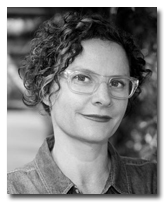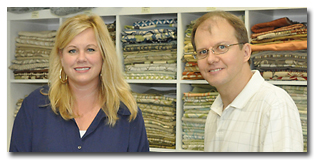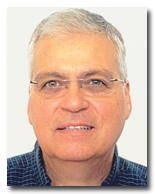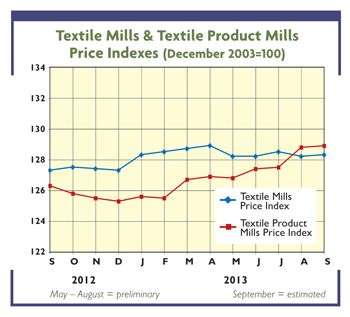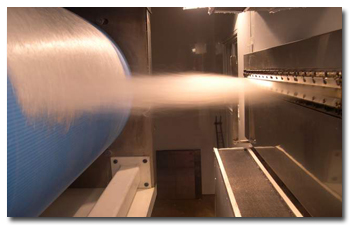Many times, the Rupp Report has informed its readers about the unbelievable behavior of the global
financial institutions. The last time was a few weeks ago (See ”
The
Rupp Report: Traceability Versus Transparency,”
TextileWorld.com, August 6, 2013). The report ended with the following
sentence: “The future will tell whether transparency becomes common sense or whether the bankers
“forget” who saved their business. But who is controlling whom on Wall Street?” This story can now
be extended to include the global foreign exchange (FX) market.
Little-regulated Market
Rumors of manipulations in benchmark rates in the FX market have existed for a long time.
Once more, as was the case with the LIBOR scandal, the practices of traders in investment banks are
in the focus. The huge international, immoral FX market with a daily volume of more than US$4
trillion is one of the least regulated markets of the world.
After the failure of the Bretton Woods agreements in the 1970s, the fast-growing FX trade has
developed on the basis of voluntary practices and based on trust among the banks. Trading takes
place mostly bilaterally between the various market participants by phone or electronic channels.
Professional currency trading is dominated by Deutsche Bank, Barclays, Citigroup and UBS
Switzerland, each having a market share of some 10 to 15 percent. The transaction volume reportedly
exceeded for the first time in April of this year the amount of US$5.3 trillion per day.
New Manipulations
By the end of August, several financial newspapers were reporting new possible irregularities
in FX trading. And it goes like this: On the last Friday in June, in just 20 minutes, the dollar
climbed against the Canadian dollar by 0.57 percent — the biggest increase in one month. And just
one hour later, two-thirds of the profits were gone. Data collected by Bloomberg News showed the
same pattern — a sudden increase just before 4 p.m. in London on the last trading day of the month,
then a quick setback effect — could be recognized over two years with 14 currency pairs 31 percent
of the time. With the most commonly traded currency pairs, such as the euro and the U.S. dollar, it
happened about half of the time.
The periodic peak values occur at the same time as the financial benchmarks, known as the
WM/Reuters rates, on which these trades are set. Fund managers and experts interpret the pattern as
evidence of attempts for a market price manipulation, which would distort the value of investments
in the amount of trillions of dollars in funds that reflect global indices. Traders exchanged
information and took customer orders to influence the rates and thus increase their own trading
profits.
Controlling authorities worldwide have investigated the abuse of financial benchmarks by big
banks, which play a major role in the determination of the benchmarks. Barclays, the Royal Bank of
Scotland and UBS have already been subject to fines of US$2.5 billion for the LIBOR manipulation.
The British Financial Conduct Authority now reviews these transactions. It seems obvious in a way
that the LIBOR scandal sensitized the international authorities to monitor the reference rates more
closely and sharply.
Studies On Possible Manipulations And Their Consequences
And now this: In a terse media communiqué, the Swiss Financial Market Supervisory Authority
(FINMA) released last Friday the following message: “FINMA is currently conducting investigations
into several Swiss financial institutions in connection with possible manipulation of FX markets.
FINMA is coordinating closely with authorities in other countries as multiple banks around the
world are potentially implicated. FINMA will give no further details on the investigations or the
banks potentially involved.” This message indicates possible parallels to the LIBOR scandal, and
could and should have delicate implications for financial institutions.
Various sources report that in the last few days, UBS has already fired two managing
directors dealing in foreign exchange. The firings are related to an internal investigation of UBS
around possibly one of the biggest manipulation cases in banking history. The dimension could be
comparable to the frauds surrounding the LIBOR interest rate.
Fast Money
Today, more and more private investors are attracted to this business by the prospect of
making fast money. However, whether private investors are capable of doing so is questionable. In
recent years they have repeatedly been the victims of fraudulent deals in FX trading.
The cases initially sound similar to the LIBOR manipulation, although there are differences
in the assessment of the functioning of the reference values: the LIBOR is still based on pure
assessments by the banks, while the benchmark is calculated automatically in the foreign exchange
market based on current market transactions. The common link is the fact that they undermine
confidence in the financial markets and make out the self-regulation of the financial industry to
be a complete farce. The European Union has already presented proposals for far-reaching
regulations of benchmarks and their creation.
Benchmarks In FX Trading
As leading reference values in FX trading, the established WM/Reuters exchange rates are
provided and compiled by World Markets, a subsidiary of State Street and Thomson Reuters.
Particularly popular is the London Fix, determined daily at 4 p.m. London time. But the rate at 8
p.m. also is often used. Of special interest is the time when the trading activities are shifted
from one global region to another. Today, exchange rates for 160 currencies are determined every
hour, and for the most traded currencies, every 30 minutes. However, different traders have
different benchmarks.
The Process
How does it work? For example, a trader receives a customer order to sell US$100 million 60
seconds before 4 p.m. The trader can short-sell the funds in the minutes before 4 p.m. on his own
account or that of the bank. If with his deal, and possibly more that are coordinated with dealers
at other banks, the price of the dollar sinks, the trader can buy back the $100 million in the time
window around 4 p.m. for a cheaper price.
The goon in this example is the customer. The dealer closes his open position by buying the
customer’s $100 million at a price that is good for him and bad for the customer. The trader
pockets a profit, no matter how strongly the exchange rate of the dollar was pushed down by the
manipulation of the involved dealers.
Wild West
Some traders call the global FX market the “Wild West.” Most deals are unregulated and run
between the banks. It is claimed that dealers for several major banks have manipulated important
fixations of FX rates by their own businesses so that their own positions become profitable. The
firings at UBS are to be carried out simultaneously with the sacking of people in two other large
FX banks, including a chief trader at JP Morgan Chase in London.
Same Old Story
It is unlikely that these top shots have acted without the knowledge of the top management.
The story, as always, repeats itself: first the pawn is offered, then the story is over, and then
they go back to business as usual. And who’s paying the bill again? Guess who.
October 8, 2013

